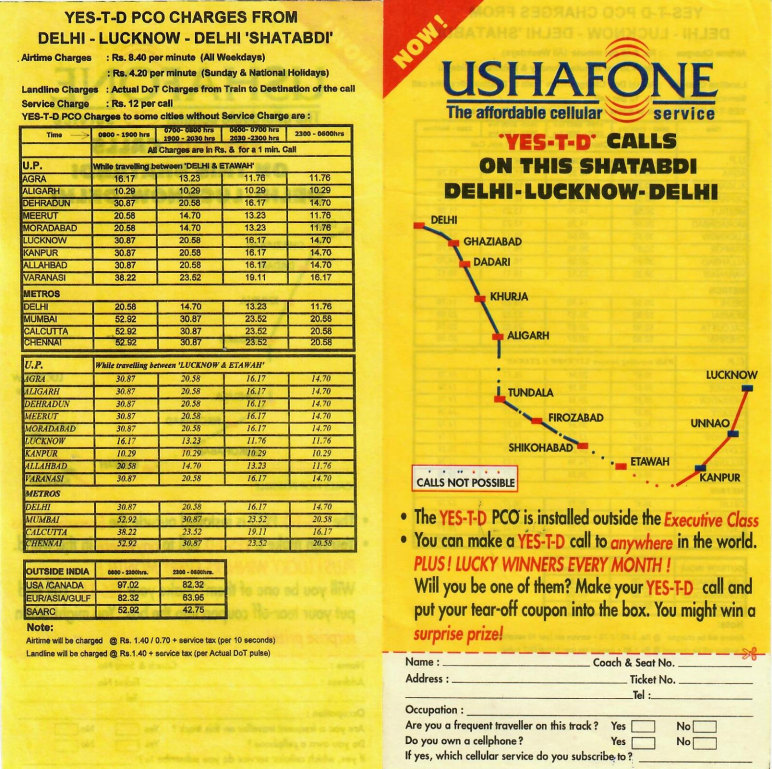
YES-T-D PCO ON MOBILE NETWORK
India has 607,000 villages, where more than 70 percent of the 1 billion Indians live. More than 50 percent of these villages (375,000) each have a village public telephone (VPT). The 1999 National Telecom Policy envisions connectivity in all villages by 2002 and a tele density of 4 percent by 2010.
YES-T-D Program was a noble idea to connect village people to their loved one working in city or abroad. YES-T-D PCO was aimed to eliminate poverty by providing self-employment opportunity. YES-T-D PCO program had created an income-earning opportunity for the PCO operators, mostly poor men & women. The YES-T-D PCO initiative had made tremendous social and economic impact in the rural areas of Utter Pradesh India, creating a ‘substantial consumer surplus’ for the users. They were popularly known as YES-T-D PCO. The profit for YES-T-D PCO was the difference between end customer tariff & operator’s tariff. This profit enables them to meet not only basic need like food, shelter, health etc. but also entertainment need.
The mobile operators in Uttar Pradesh (UP)-India’s largest state- was promoting rural connectivity in a big way. The rural PCO service was called “YES-T-D,” differentiating it from domestic long-distance PCOs using DoT landlines. In places farther from a base station, antenna and boosters were used. We installed some 500 YES-T-D PCO in UP
We found that PCOs using our phones was earning 15 percent more than those using landlines. There are inherent advantages, like the phone can be taken inside a house where women can talk in privacy. Villagers have a number to give to their relatives where they can call back
In those days if you were traveling by train or bus there was no contact with anyone outside. We set up YES-T-D PCO on Shatabdi Trains and Bus to Lahore from Delhi. Leaflet was given to show where there will be connectivity and people could talk.


